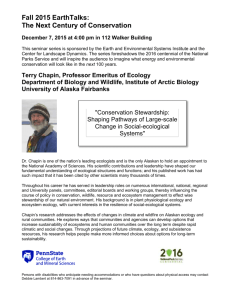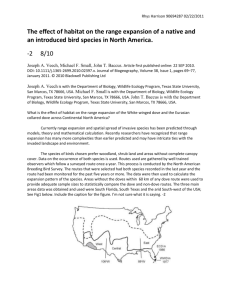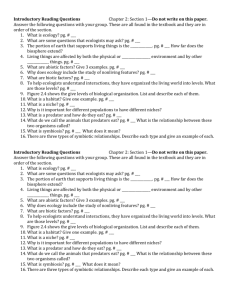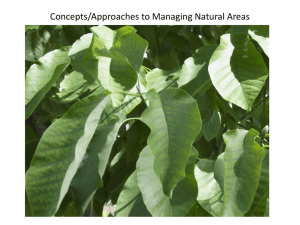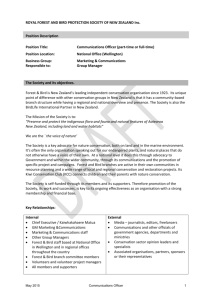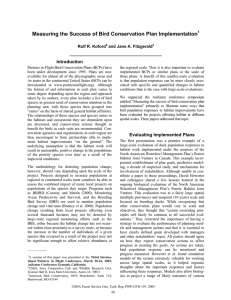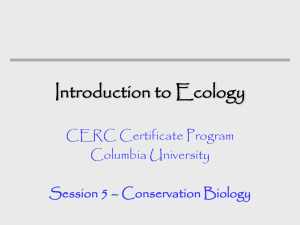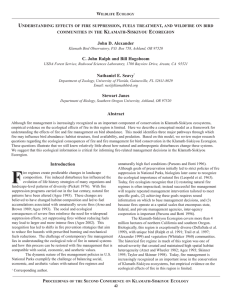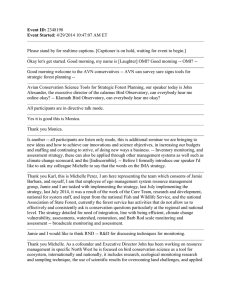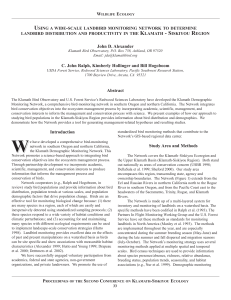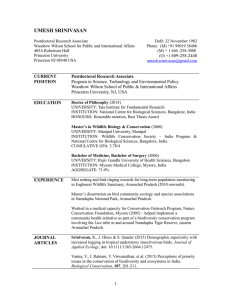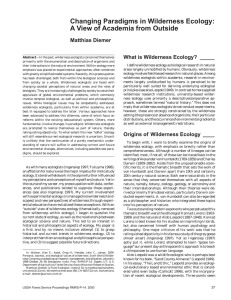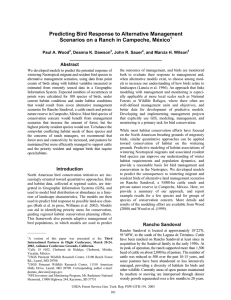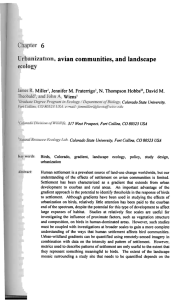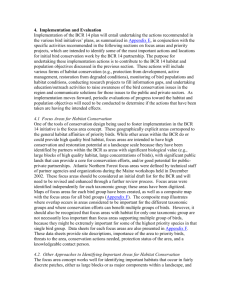Roarke Donnelly`s Autobiography
advertisement
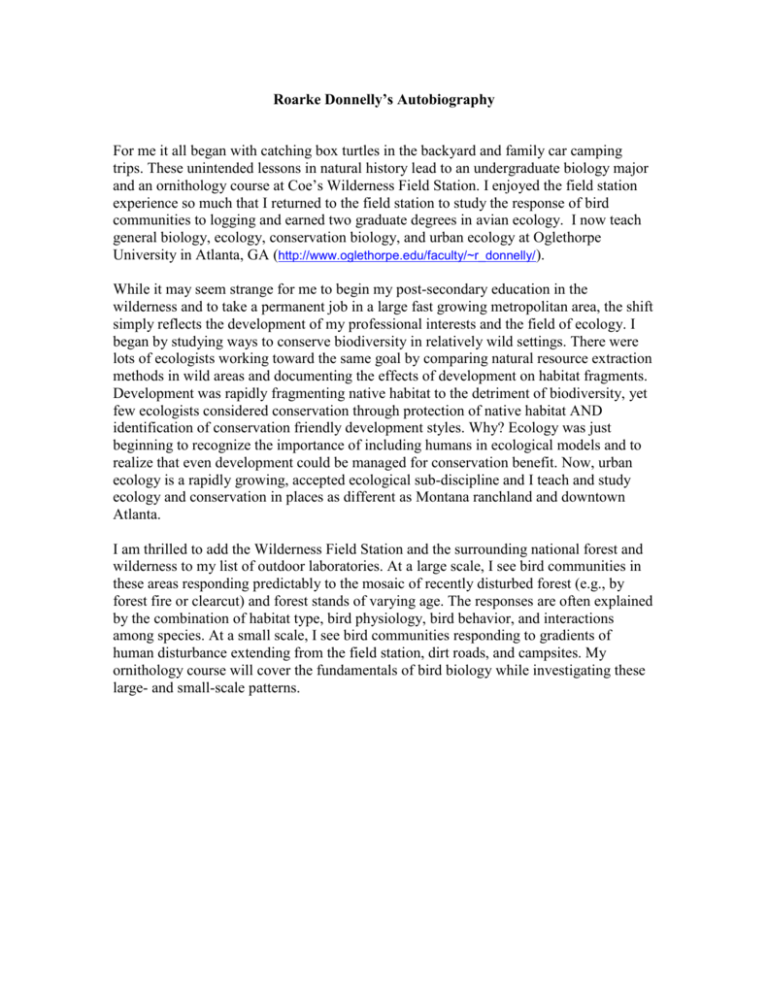
Roarke Donnelly’s Autobiography For me it all began with catching box turtles in the backyard and family car camping trips. These unintended lessons in natural history lead to an undergraduate biology major and an ornithology course at Coe’s Wilderness Field Station. I enjoyed the field station experience so much that I returned to the field station to study the response of bird communities to logging and earned two graduate degrees in avian ecology. I now teach general biology, ecology, conservation biology, and urban ecology at Oglethorpe University in Atlanta, GA (http://www.oglethorpe.edu/faculty/~r_donnelly/). While it may seem strange for me to begin my post-secondary education in the wilderness and to take a permanent job in a large fast growing metropolitan area, the shift simply reflects the development of my professional interests and the field of ecology. I began by studying ways to conserve biodiversity in relatively wild settings. There were lots of ecologists working toward the same goal by comparing natural resource extraction methods in wild areas and documenting the effects of development on habitat fragments. Development was rapidly fragmenting native habitat to the detriment of biodiversity, yet few ecologists considered conservation through protection of native habitat AND identification of conservation friendly development styles. Why? Ecology was just beginning to recognize the importance of including humans in ecological models and to realize that even development could be managed for conservation benefit. Now, urban ecology is a rapidly growing, accepted ecological sub-discipline and I teach and study ecology and conservation in places as different as Montana ranchland and downtown Atlanta. I am thrilled to add the Wilderness Field Station and the surrounding national forest and wilderness to my list of outdoor laboratories. At a large scale, I see bird communities in these areas responding predictably to the mosaic of recently disturbed forest (e.g., by forest fire or clearcut) and forest stands of varying age. The responses are often explained by the combination of habitat type, bird physiology, bird behavior, and interactions among species. At a small scale, I see bird communities responding to gradients of human disturbance extending from the field station, dirt roads, and campsites. My ornithology course will cover the fundamentals of bird biology while investigating these large- and small-scale patterns.



